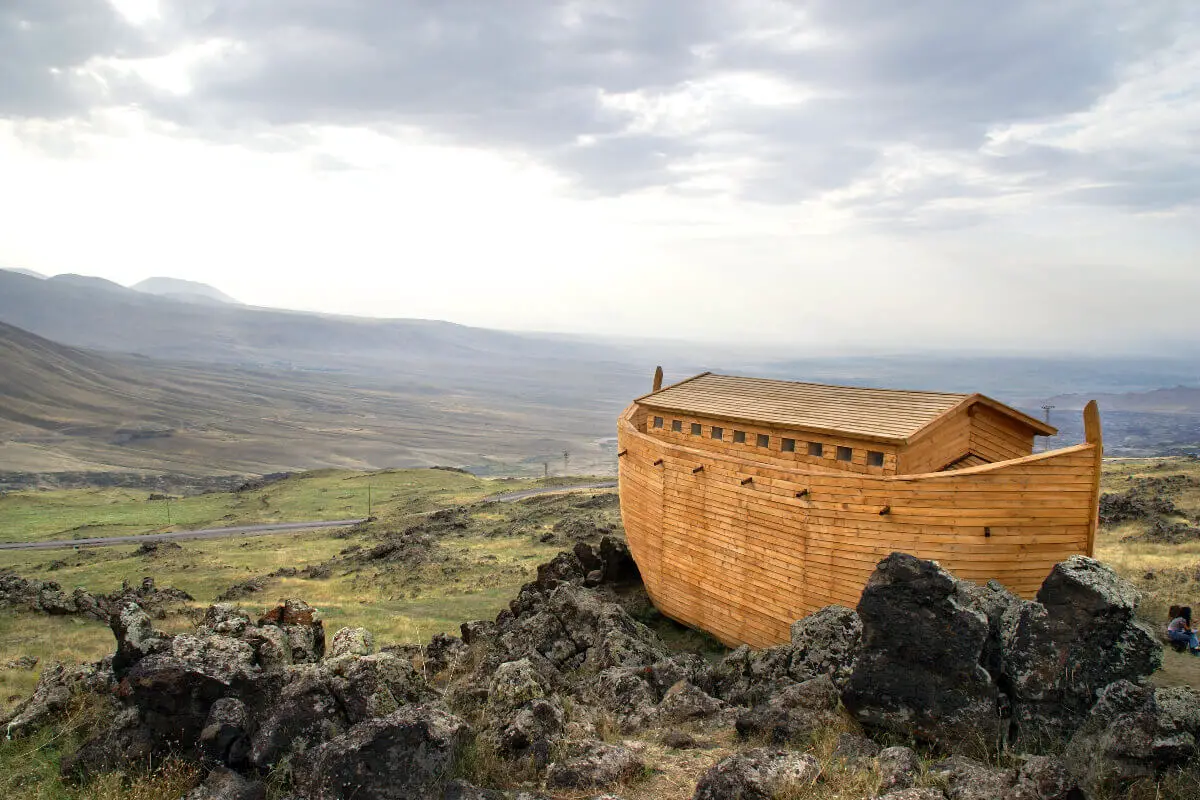In the annals of human history and myth, the story of Noah’s Ark, as depicted in the biblical Book of Genesis, holds a position of enduring fascination. The narrative captivates not only due to its religious and moral implications but also due to the rich opportunities it offers for analysis across multiple scientific and historical disciplines.
This discourse will examine the tale from four comprehensive, interlinked perspectives: historical, technological, biological, and geological. The aim is to present an enlightening exploration of Noah’s Ark that transcends the boundaries of faith, engages the spirit of scientific inquiry, and immerses readers into a vibrant pageantry of Biblical history navigated by the tenets of modern science.
Table of Contents
- Historical Perspective of Noah’s Ark
- Technological Examination of Noah’s Ark
- Biological Overview of Noah’s Ark
- Geological Impact of a Global Flood
- Related Questions
Historical Perspective of Noah’s Ark
The Genesis narrative of Noah’s Ark, one of the Bible’s most unmistakable episodes, is a timeless touchstone for addressing universal human concerns such as divine justice, divine mercy, human guilt, and the nature of human existence.
This narrative encompasses many historical interpretations, reflecting its multifaceted characterization and confounding ambiguity. One could confidently assert that the Ark story, represented in Genesis chapters 6-9, is not merely a historical account; it is an icon, a symbol carrying myriad significances within varied contexts.
The interpretation of Noah’s Ark has historically been subjected to multiple chronological strata: Antiquity, the Middle Ages, the Renaissance, the Age of Enlightenment, and the Modern era. Each epoch brings its analytical lens, societal context, and worldview to the text, resulting in a constantly evolving understanding of the narrative.
In Antiquity, it was common for Jewish and Christian interpreters to consider events of Noah’s Ark as historic. This thinking is echoed in the works of historians like Flavius Josephus and early church theologians, including Augustine of Hippo.
This perception was entrenched in the belief that the Bible comprised literal history, with the flood serving as divine retribution for humanity’s sinful conduct.
During the Middle Ages, allegorical and moralistic interpretations of Noah’s Ark gained prominence. Here, the Ark emerged as an archetype for the Church, a refuge for the faithful amidst a morally corrupt world. The story was transformed into a moral parable imparting obedience, trust, and salvation lessons.
The Renaissance and Age of Enlightenment brought with it novel paradigms, drawing attention towards the scientific viability of the Ark’s narrative. Scholars and scientists started to critically examine aspects like the Ark’s construction, size, and the feasibility of housing an array of animals. Here, the narrative transmuted into a scientific puzzle, skeptically inspected within the burgeoning frame of empirical science.
Finally, the Modern era witnessed a fascinating dichotomy in the interpretation of Noah’s Ark. On the one hand, literalist Christian fundamentalism retains a commitment to a historical understanding of the Ark and the flood.
On the other hand, there is the approach of Biblical criticism and secular humanism, viewing the Ark narrative as a myth in the broader Near East flood mythos tradition. Moreover, psychological interpretations inspired by Jungian archetypes have construed the Ark narrative as a symbolic depiction of the human psyche’s journey through adversities.
It becomes evident that the interpretations of Noah’s Ark are as rich and diverse as the history they’ve sailed through. Viewed through distinctive historical, cultural, and intellectual lenses, this narrative has transcended biblical theology, evolving into an emblem of human experiences and existential truths.
The Noah’s Ark tale’s enduring applicability and fascination is a testament to its complex, adaptable character, inviting evermore fertile engagements in future historical contexts.
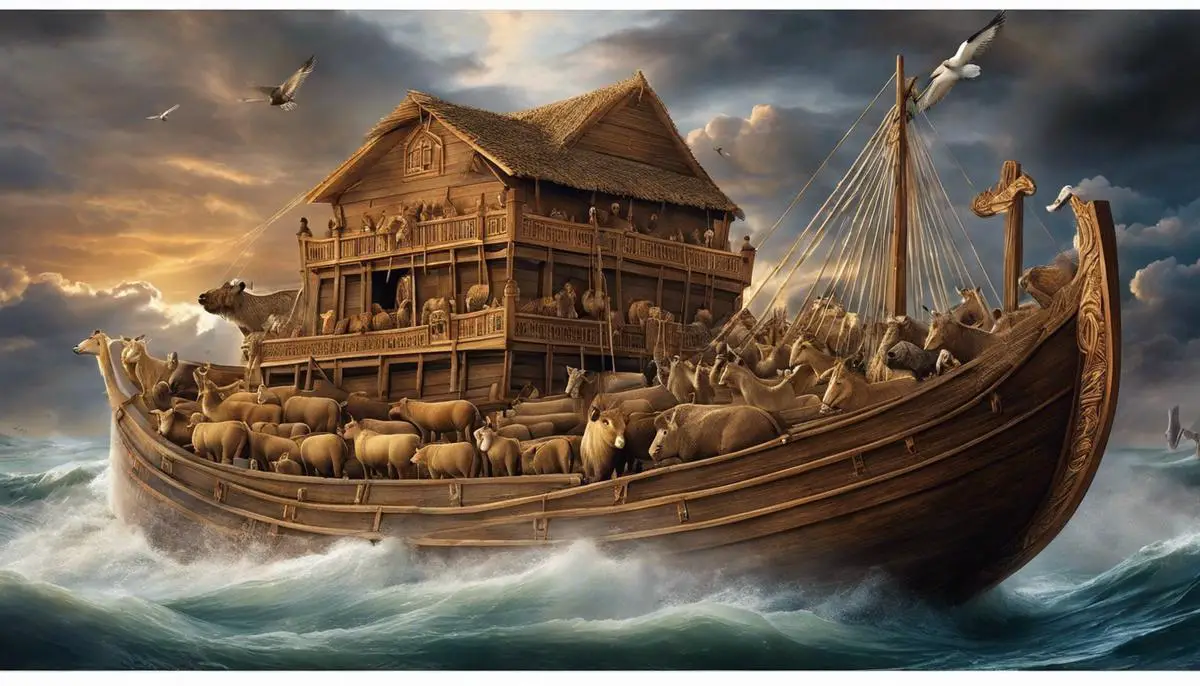
Technological Examination of Noah’s Ark
The Modern Feasibility of the Ark’s Construction: An In-depth Analysis
The exploration of Noah’s Ark through the lens of contemporary technology pivots its gaze from the historical, moral, and psychological registers to engage with the physical realities and constraints of shipbuilding and animal husbandry.
A question that naturally arises in this exploration is whether humanity could re-create this biblical marvel with modern engineering expertise and materials.
The most detailed account of the Ark replicas comes from Genesis 6:15, where specific measurements are given – “The length of the ark shall be three hundred cubits, the breadth of it fifty cubits, and the height of it thirty cubits.” A cubit’s size is not universally agreed upon, but it is generally accepted to be around 18 inches. Consequently, the Ark’s calculated dimensions would be approximately 450 feet long, 75 feet wide, and 45 feet high.
The size attests to an enormous structure, far exceeding the norms for even today’s most sizeable wooden ships. The six-masted schooner Wyoming, the largest wooden ship ever recorded, was roughly 330 feet long – significantly shorter than the speculated length of Noah’s Ark.
Moreover, Wyoming faced considerable flexing and leakage issues due to the structural limitations of wooden materials over extended lengths. This suggests that using solely wood, per the biblical instructions, to construct a ship of the Ark’s dimensions would present considerable challenges, even with modern technology.
However, advances in materials science could potentially circumvent these issues. Employing steel-reinforced wood or using more robust, lighter, and flexible contemporary materials could construct a sound and seaworthy vessel of the Ark’s dimensions.
Animal housing poses an additional layer of complexity. Incorporating today’s understanding of species diversity into the narrative, the Ark must accommodate about 8.7 million species. The numbers are staggering even if one excludes aquatic species and focuses only on land-dwelling vertebrates and insects.
Modern zoos, with all their innovations in animal housing, work meticulously to provide for a few hundred species, making the Ark’s task seem Herculean by comparison.
Nevertheless, advanced technologies like cryopreservation and DNA banking, although unable to revive an entire organism, enable the storage of genetic material from a massive array of species in a compact form. Zoological advancements continue to improve our understanding of miniaturizing habitats without compromising animal welfare.
In sum, the thorough coupling of shipbuilding and zootechnical requirements in constructing Noah’s Ark presents a formidable challenge, even to modern technology. Aseismatic latency, resource management, navigation, and other factors further compound these complexities.
Although the literal construction of the Ark as described would remain highly challenging in the current epoch, the narrative’s inherent invitation to explore humanity’s technological prowess and its relationship to the natural world endures.
In this regard, the story of Noah’s Ark transcends its historical context. It continues to provoke thought and incite innovation in modernity that the original authors could scarcely have dreamed of.
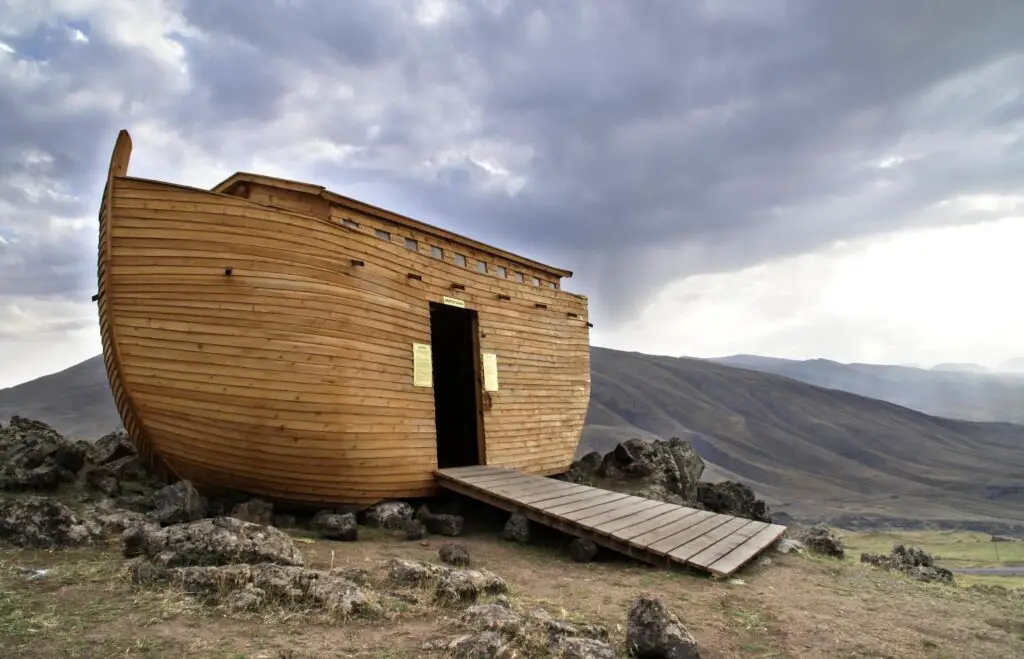
Biological Overview of Noah’s Ark
Diving deeper into the narrative of Noah’s Ark, the next milestone is to ponder over logistics. With an assumption towards the literal existence of the Ark, it’s paramount to address the feat of housing all species on a single vessel – a feat deemed improbable, if not impossible, by skeptics.
Using the Ark’s dimensions as given in Genesis 6:15 (300 cubits long, 50 cubits wide, and 30 cubits high), one must devise a comprehensive plan to accommodate approximately 8.7 million identified species.
This is not only in terms of spatial constraints but also considering the varied ecological requirements of different species. The challenges of providing an optimized climate for each species, ensuring their food supply, maintaining their health, and mitigating direct and indirect interactions between species become monumental.
The intricate knowledge and technicality of shipbuilding spring to the forefront here. Constructing such a mammoth vessel using solely wood would pose substantial structural risks due to the vulnerability of wood to waterlogged deterioration and its limitations for sustaining mammoth weights. Potential solutions could exist in steel-reinforced wood or other contemporary materials that bring targeted longevity and stability.
Still, the question of fitting millions of species remains pressing. In the modern era, zootechnical innovations and advances in animal housing provide promising prospects with miniature habitats and compartmentalization strategies. The lessons from varying scales of zoos and conservation centers present innovative yet feasible strategies that could be adapted for such a situation.
Within these spirited discussions, the speculation of cryopreservation and DNA banking as potential solutions to the deluge problem often emerges. Storing genetic material for all the world’s species could drastically reduce space needs, eliminating the issues of interspecies interactions and resource management.
However, reviving these species in a post-diluvian world brings forth Pandora’s box of ethical and logistical challenges.
Considering such a vast vessel, it’s essential to scrutinize other significant aspects, such as seismic latency, resource management, and navigation. The potential for hazardous seismic activity and its consequent strain on the vessel is valid.
Strategies such as shock absorbers or flexible building materials for mitigating this risk require exploration. Equally, resource management strategies for water, waste disposal, and food supply need meticulous planning and sustainable mechanisms. As for navigation, understanding how a vessel of this magnitude would be maneuvered and guided through a global flood remains a mystery.
Pushing the boundaries of humanity’s technological prowess, the hypothesis of Noah’s Ark invites one to question the existing relationship with the natural world. It ventures into the space between utopia and dystopia, where humanity’s capacity for innovation treads on the delicate balance of natural preservation and dominance.
It demands humility and reverence for natural forces and the incredible diversity of life, even as it dares to imagine a more audacious intervention in the face of potential planetary catastrophe. The Ark’s narrative, demanding as it is, highlights not just the spirit of human survival but the survival of life in its multitudinous forms and the imperative of their safe passage into a new world.
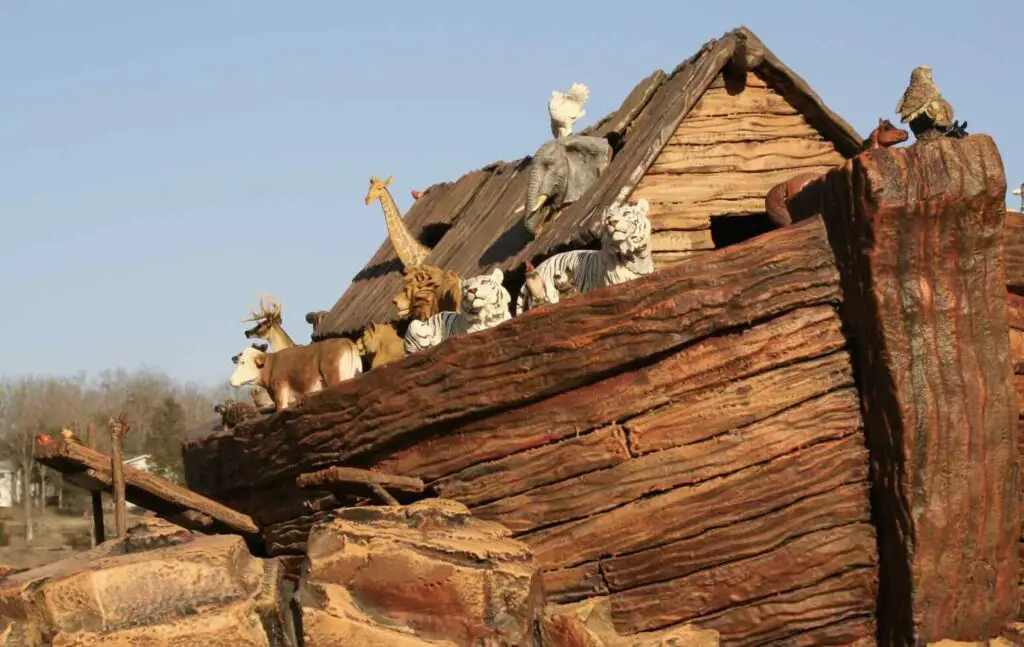
Geological Impact of a Global Flood
Determining the geological consequences and proofs of a biblical-global deluge, as proposed by Genesis, relies heavily on speculative analysis based on our understanding of Earth’s geology and our modern interpretation of substantial geological changes that have occurred throughout the planet’s history.
It would certainly be a feat of epic proportions, involving a combination of several geological phenomena acting in an unprecedented synchrony. The mind races with possibilities.
A prerequisite for such a deluge would be a source for this immense volume of water. One theory, albeit heavily speculative, could involve the release of immense volumes of underground water.
The existence of large amounts of sub-surface water was postulated by post-World War II scientific research, supported further by evidence from seismic data and diamond inclusions. The abrupt and violent release of this water, due to seismic triggering or crustal rifting, could potentially cause flooding on a scale as narrated in Genesis.
After the colossal inundation, the massive redistribution of water weight on the earth’s crust could induce large-scale tectonic activities. Previously, the continents might submerge under less aqueous pressure, resulting in a global remolding of the tectonic jigsaw. This might yield signatures in the geologic strata, discernable as anomalies in rock magnetic properties or geochemical indices.
Post-deluge would also witness substantial surface erosion and sediment transport, resulting in extensive sedimentary deposits, typically identifiable by their distinctive layering and fossil content. Speaking of fossils, the global deluge would provoke a compelling mass extinction event, excluding the inhabitants of the Ark. This could potentially result in a distinct biostratigraphic horizon featuring a sharp decrease in biodiversity.
Such an event’s chilling and devastating outcome would be a global climatic disarray. Rapid sea-level rise coupled with high amounts of aerosols and sediment in the atmosphere could lead to radical climate shifts, potentially plunging the earth into what is infamously known as a ‘snowball state.’ Geological evidence of this would come from substantial deposits of glacial till and striations associated with extensive glaciations.
Nonetheless, discerning actual proof of a global deluge is challenging. With most geologic processes being slow, steady, and incredibly complex, the search for evidence becomes uncertain.
After all, a quick reading of the natural chronicle requires careful deciphering of an expertly scribed geological palimpsest. It’s a tricky task, but the geological intrigue it presents and the quest to understand the grandeur of natural events undoubtedly heralds an unmistakable allure. Just as the river carves the valley, so does knowledge carve the curious mind.
A probe into the geological implications of Noah’s flood invites us to connect the dots of our shared past and appreciate the interplay of life and earth’s geological drama, handled with the finesse of a master playwright by nature itself. To the curious mind, that is the most fulfilling pursuit.
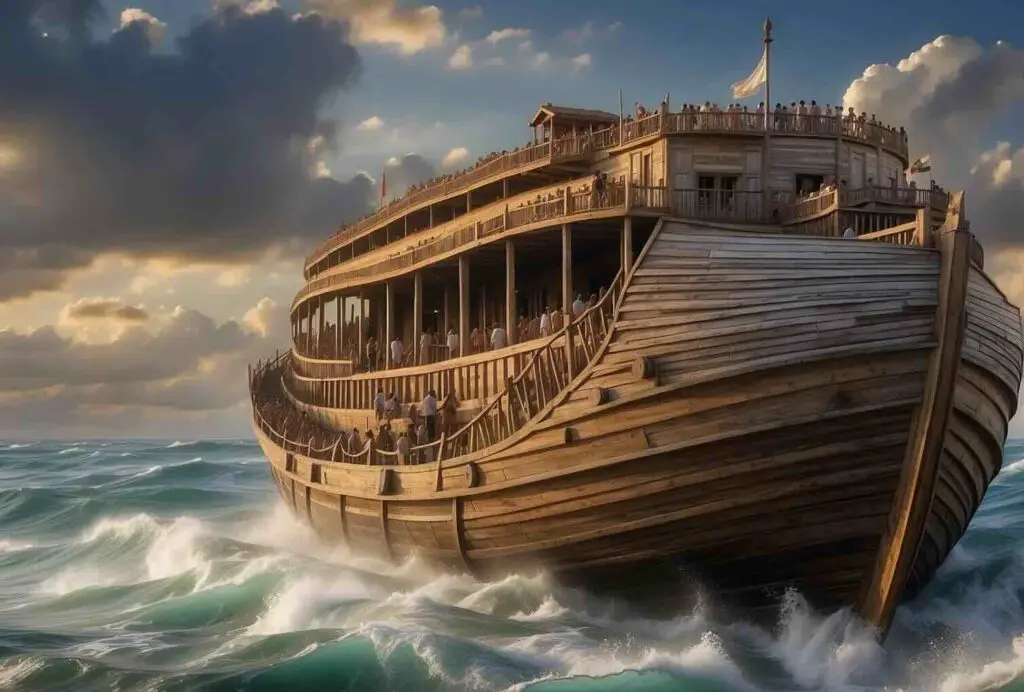
The investigation into Noah’s Ark invites us to journey through various dimensions of our natural world, history, and particularly human imagination.
Whether you interpret the Ark as a religious truth, a symbol, or an intriguing myth, its reach is undeniably profound, spanning numerous cultures and provoking contemplation on everything from ancient shipbuilding capabilities to preserving animal species.
Beyond the questions explored, the story of Noah’s Ark inexorably challenges us to consider our relationship with our planet and the interconnected web of life it harbors – a testament to the enduring echo of this ancient narrative.
The Hummel Family is a website all about Family History research. We focus on Swedish, German, English, Scottish, and American Genealogy. We also discussed Asia and China, as we had ancestors who spent many years in China.
You are welcome to join us and become part of our community by signing up for our FREE newsletter, The Hummel Family; sign up by clicking here.
Check out our Youtube Channel, Family History Buzz, by clicking here.
Related Questions
The Old Farmer On The Frontier Lost His Horse – An Old Chinese Story
An old farmer who lived on the northern frontier of China, on the border of Mongolia, lost his horse. It had wandered into the desert into no-man’s land. When his neighbors heard of it they came to his house to commiserate with him. But all he would say was “You can you never tell it may turn out to be a good thing after all.”
You can discover more by reading The Old Farmer On The Frontier Lost His Horse – An Old Chinese Story by clicking here.
What Are The Benefits From Knowing Your Family History?
Some of the benefits of researching your family history include 1) it helps give you a self-identity, 2) you discover your cultural heritage, 3) will increase your overall happiness, 4) teaches resilience, 5) helps us understand what it means to be human, 6) helps you connect with your family and 7) helps you understand more about your family’s history of health issues.
You can learn more by reading What Are The Benefits From Knowing Your Family History? by clicking here.
Why I Am Thankful For My Parents and Family – 13 Gifts They Have Given Me
I am blessed. I have parents who have been willing to give freely to me of themselves and have, in the process, given me many life-changing gifts. My parents and family have given me the gift of sacrifice, the gift of giving, the gift of culture, the gift of independence, the gift of education, the gift of learning, the gift of thinking for myself, the gift of courage, the gift of trust, the gift of wings to fly, the gift of learning about my eternal destiny, the gift of faith, and the gift of laughter.
You can learn more by reading Why I Am Thankful For My Parents and Family – 13 Gifts They Have Given Me by clicking here.
